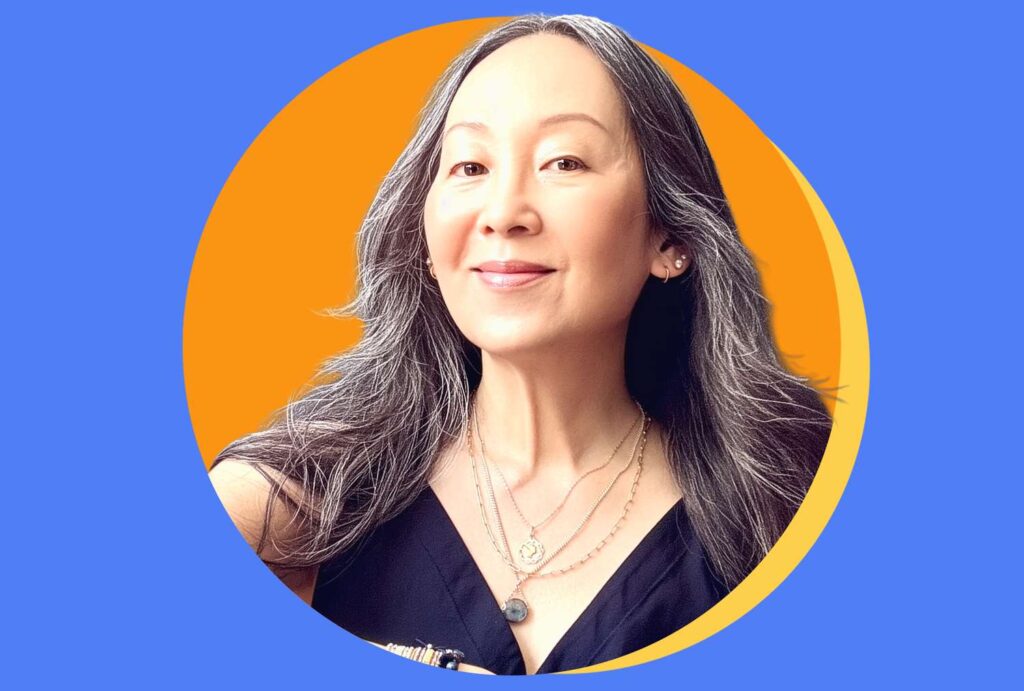- Mimi Ison, 62, uses fitness and lifestyle to challenge negative stereotypes about aging.
- She discovered boxing at 50 and shuffling at 58, proving it’s “never too late” to try something new.
- Her healthy habits and outlook promote aging as strength, resilience and possibility—not limitation.
“Pro-age.” “Midlife enthusiast.” “Aging person in training.” These are all terms Mimi Ison has used to describe herself to her half a million social media followers. And to me, she fittingly introduces herself age first.
“I’m 62,” she shares immediately. “I tell people my age all the time because I want to disrupt the idea of what getting older is. The narrative out there is pretty lousy.”
Ison has been dancing for most of her life, but her platform skyrocketed when she picked up a new hobby and shared it with the world: shuffling. She first started to shuffle (which includes a combination of quick movements like running man, T-step, the Charleston and more) when she was 58, emphasizing that it’s “never too late.”
But her nontraditional fitness journey truly started at age 50. During a regular visit to her local gym, Ison stumbled upon a free boxing class, and with encouragement from the staff, she took it on.
“I can honestly say it changed my life,” she says. “I’d never done a burpee before; I couldn’t do a push up. I had never carried a sandbag, and for God’s sake I had never hit anything before.” But through boxing, Ison learned to be “comfortable with discomfort,” which has improved her strength more than she could have ever imagined.
There’s plenty of research to show the benefits of boxing as you age. Boxing is commonly used as an effective exercise for those with Parkinson’s disease as it can help improve motor skills, coordination and balance. So Ison picking up the sport is more than just a great workout.
Before her workouts, the social media star makes sure to get a little bit of sun exposure each morning, after “slapping on some sunscreen” and drinking a big glass of water. After her morning walk, she prepares the fiber-packed breakfast that she swears by.
“I’ve been eating the same thing for a pretty long time now,” Ison shares. “It’s usually blueberries, plain yogurt and a handful of unsalted nuts. And coffee, of course.” She clarifies that she’s in love with her Nespresso and makes herself a sugar-free latte with frothed creamer every morning. Focusing on a low-sugar diet has been important for Ison, as she admits her A1C level (average blood sugar level for the past 90 days) is rising.
“I used to run on caffeine and sugar for many, many years, and my morning was all about the little brown sugar oatmeal packet paired with an iced coffee with tons of honey,” Ison details, as she reflects on how her habits have changed. “I would start my day with that, and then a couple of hours later, I would have another coffee and it would continue through the day. I just realized that if I didn’t start my day out with a bunch of refined sugar, I wouldn’t keep craving it through the day. It took a long time to transition over to this non-sugary breakfast, but now I’m really used to it.” Research suggests that starting the day with a high-added-sugar breakfast can impair morning focus, so her switch to a more nourishing meal was a smart move.
Making new, healthy habits, from her eating pattern to her fitness rituals, defines Ison’s motivation to become her best self. And while to Ison “ageism is alive and well” both externally in her comments section and as an internal instinct, her mission is to literally combat the voice that says “you can’t” with each jab, cross and uppercut.
“I think for some people, they may be surprised to see someone my age doing some of the activities I do, but that’s kind of the point,” Ison says. “Your age is not a limitation. A lot of people use age as a default for why they can’t do things or why they shouldn’t do things. And as you get older, a lot of things do happen and age does matter, but don’t automatically use it as a default.”
She ends our conversation reiterating this message: “Every age has nuance. Every age has challenges. But I think as we get older, you’re only hearing the negative piece of it. You’re not hearing about any of the positive parts of it, and there are lots of them.”

